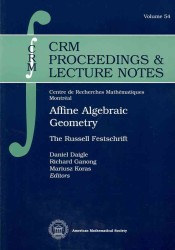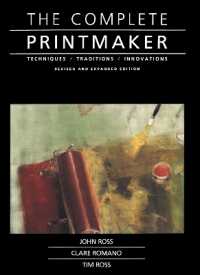Full Description
The author has written a new and unique text for courses in Computers in Education or Instructional Media and Technology. The purpose of this text is to address what technology teachers should know and be able to do, but the focus is on learners and learning rather than on the technology itself. The book is unique in that it presents the students' learning goals first rather than the technology tool, thereby focusing on the learner and the learning rather than the technology. The examples throughout the chapters present ideas for tasks that can be completed with a variety of tools rather than one specific tool that teachers may not have access to. Each chapter includes a brief summary of research from educational technology, learning theory, and other areas to build a foundation for chapter examples and activities. The chapters also include examples for learning in a variety of contexts and content areas and can be applied easily to teaching other ideas and subjects. A unique chapter (Chapter 9) on teacher productivity helps support future educators in their everyday tasks.The book illustrates what technology-enhanced learning can be like today and prepares teachers and administrators for what may come tomorrow. Some of the pedagogical features in the book include: Cases--These appear at the beginning of each chapter and provide a framework for the chapter discussion that follows. ‾These cases are compelling snapshots from real classrooms that help students to connect educational concepts to the real world. "elated questions within and at the end of each chapter encourage the reader to think critically about the material and its related application to the classroom. Meet the Needs of Today's Students feature--Each chapter contains margin notes to help the readers address the learning needs of ALL students including those with diverse needs and English Language Learners. Meeting the Standardsfeature--This feature shows how the National Educational Technology Standards connect to the learning goal of each chapter. ‾Additional state standards are listed on the book's companion website. Tool CloseUpfeature--These boxes explore the features of technology tools discussed in the chapter in more detail.Learning Activitiesfeature--Provide opportunities to apply the chapter's guidelines and technology tool discussions to a variety of learning activities related to all grade levels and content areas.
Contents
SECTION ONE WHAT TEACHERS NEED TO KNOW ABOUT TEACHING WITH TECHNOLOGY Chapter 1 Understanding Classroom Learning and Technology Use Overview of Learning and Technology Students and Technology Teachers and Technology Guidelines for Using Educational Technology Technology-Enhanced Learning Activities Technologies for Supporting Learning Assessment Technology-Supported Lesson Example SECTION TWO SUPPORTING STUDENT LEARNING WITH TECHNOLOGY Chapter 2 Supporting Student Content Learning Overview of Content Learning and Technology in K-12 Classrooms The Technology-Supported Content Learning Process Guidelines for Supporting Student Technology-Enhanced Content Learning Content Learning Technologies Learning Activities: Content Learning Assessing Content Learning: Scoring Guides Sample Lesson: Content Learning Chapter 3 Supporting Communication Overview of Communication and Technology in K-12 Classrooms The Technology-Supported Communication Process Teachers and Technology-Supported Communication Guidelines for Supporting Communication with Technology Communication Technologies Learning Activities: Communication Tasks Assessing Communication Tasks: Rubrics Sample Lesson: Communication Chapter 4 Supporting Student Critical Thinking Overview of Critical Thinking and Technology in K-12 Classrooms The Critical Thinking Process Guidelines for Supporting Student Critical Thinking with Technology Critical Thinking Technologies Technology-Supported Learning Activities: Critical Thinking Assessing Critical Thinking With and Through Technology Sample Lesson: Critical Thinking Chapter 5 Supporting Student Creativity Overview of Creativity and Technology in K-12 Classrooms The Creative Thinking Process Guidelines for Supporting Student Creativity with Technology Creativity Technologies Learning Activities: Creativity Assessing Learner Creativity From the Classroom: Technology and Assessment Sample Lesson: Creativity Chapter 6 Supporting Problem-Solving Overview of Technology-Supported Problem-Solving in K-12 Classrooms The Problem-Solving Process Guidelines for Technology-Supported Problem-Solving Problem-Solving and Inquiry Technologies Learning Activities: Problem-Solving and Inquiry Assessing Learner Problem-Solving and Inquiry Sample Lesson: Problem-Solving Chapter 7 Supporting Student Production Overview of Technology-Supported Production in K-12 Classrooms The Production Process Guidelines for Supporting Student Technology-Enhanced Production Productivity Technologies Learning Activities: Production Projects Sample Lesson: Production Chapter 8 Supporting Student eLearning Overview of eLearning in K-12 Environments Processes Involved in eLearning Teachers and eLearning Guidelines for Supporting Student eLearning eLearning Technologies Learning Activities: eLearning Assessing eLearning Sample Lesson: eLearning PART THREE SUPPORTING TEACHERS Chapter 9 Supporting Teacher Development Overview of Professional Development in Technology-Supported Learning The Technology PD Process Guidelines for Working Toward Effective PD Teacher Tools for Technology-Supported Learning Learning Activities: Professional Development Assessing Professional Development PD Plan Example Chapter 10 Supporting Learner Futures Overview of Future Trends and Educational Technology Guidelines for Supporting Students in the Technology-Enhanced Future Trends in Tools and Tool Use Activities to Prepare Learners for the Future Assessing Student Preparedness for the Future Sample Lesson: The Future








